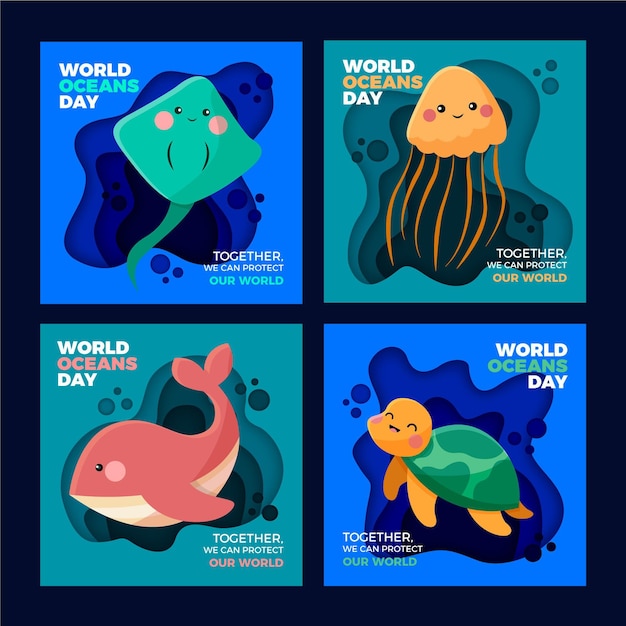

The blobfish is a deep-sea dwelling fish with a uniquely gelatinous appearance.
Contrary to popular belief, blobfish are not always blob-shaped. They only look like that when they are out of water.
Blobfish live at extreme depths of up to 4,000 feet, where the pressure is several dozen times greater than at sea level.
Due to their habitat, blobfish lack swim bladders, which are the organs that enable most fish to regulate their buoyancy.
Blobfish are often referred to as the world’s ugliest fish, but true beauty lies in the eye of the beholder.
Blobfish have a diet primarily consisting of crabs and lobsters that inhabit the deep-sea regions.
Blobfish possess a special type of soft cartilage that enables them to withstand the intense pressure of their deep-sea environment.
The blobfish’s unique appearance serves as a camouflage, blending with the extreme conditions of its habitat.
Blobfish have a limited ability to move and often rely on ocean currents to bring food within their reach.
Blobfishes’ gelatinous appearance is mainly due to their low muscle density.
The blobfish doesn’t have any natural predators in its deep-sea habitat.
Blobfish are not dangerous to humans and pose no threat if encountered during deep-sea exploration.
Blobfish males take parental responsibility by guarding and protecting the eggs until they hatch.
The blobfish has a slow metabolism, allowing it to thrive in conditions where food is scarce.
The gelatinous blob-like body of the fish helps them float effortlessly in the deep-sea currents.
Blobfish have been known to change color depending on their mood or reproductive stage.
Despite their unattractive appearance, blobfish have a deeply calming effect on deep-sea researchers.
Blobfish are not generally found in aquariums, as recreating their extreme habitat conditions is challenging.
Blobfish have small, beady eyes that help them detect prey in low-light conditions.
The blobfish’s lack of buoyancy control makes it difficult for them to escape fishing nets, making them vulnerable to overfishing.
Blobfish are highly adaptable and can withstand extreme changes in temperature and salinity.
Blobfish have an average lifespan of approximately 5-10 years.
Blobfish rely on their dense gelatinous structure to absorb nutrients from the water around them.
Blobfish have a slow reproductive cycle, with females typically producing one clutch of eggs per year.
Because blobfish lack bones, their flesh has a gelatinous texture, making them unappetizing to most predators.
Despite their lack of commercial value as food, blobfish have become an iconic symbol for deep-sea conservation.
Blobfish are most commonly found off the coast of Australia and Tasmania.
Blobfish are often inadvertently caught in deep-sea trawling nets, contributing to their decline in certain regions.
Blobfish have adapted to the extreme pressures of their environment by evolving a unique body structure.
Blobfish have small pectoral fins that allow them to glide through the water with minimal effort.
Blobfish have a low metabolic rate, allowing them to survive on limited food resources.
Blobfish have become internet sensations due to their unusual appearance, attracting both fascination and amusement.
Blobfish have a limited ability to sense vibrations in the water, helping them detect potential threats or nearby prey.
Blobfish are not typically seen in daylight, as they prefer the safety and darkness of their deep-sea environment.
The blobfish’s gelatinous body is made up of primarily water and soft tissue.
Blobfish have a relatively large mouth in proportion to their body size, enabling them to consume larger prey.
The blobfish’s gelatinous flesh acts as a cushion against the intense pressure they experience in their deep-sea habitat.
Blobfish have adapted to conserve energy, reducing the need for constant movement.
Blobfish are not commercially fished for consumption due to their limited appeal and lack of market demand.
Blobfish have an underdeveloped muscular system, contributing to their unique appearance.
Blobfish have a low reproductive rate, making it crucial to protect their deep-sea habitat from human disturbances.
Blobfish are resistant to decompression when brought to the surface, making it easier to study them in laboratories.
Blobfish have limited vision due to the darkness of their habitat, relying more on other senses to navigate their environment.
Blobfish have a distinct lack of scales, making their skin appear soft and malleable.
Blobfish inspire curiosity and fascination, reminding us of the incredible diversity and adaptation of life in our oceans.
Around the world, coffee enthusiasts enjoy Monin coffee concentrate since it is a multipurpose product. Conveniently combining…
The Importance of Choosing the Right Shower for Your Bathroom Renovating your bathroom can be…
Usain Bolt holds the record for the fastest 100-meter sprint in history.Bolt was named Sportsman…
Love is in the air... and it smells suspiciously like chocolate!Roses are red, violets are…
Life's a beach, take a picture and relax.Sun, sand, and salty kisses. That's what beach…
Hungary is home to the largest thermal water cave system in the world.The Rubik's Cube…